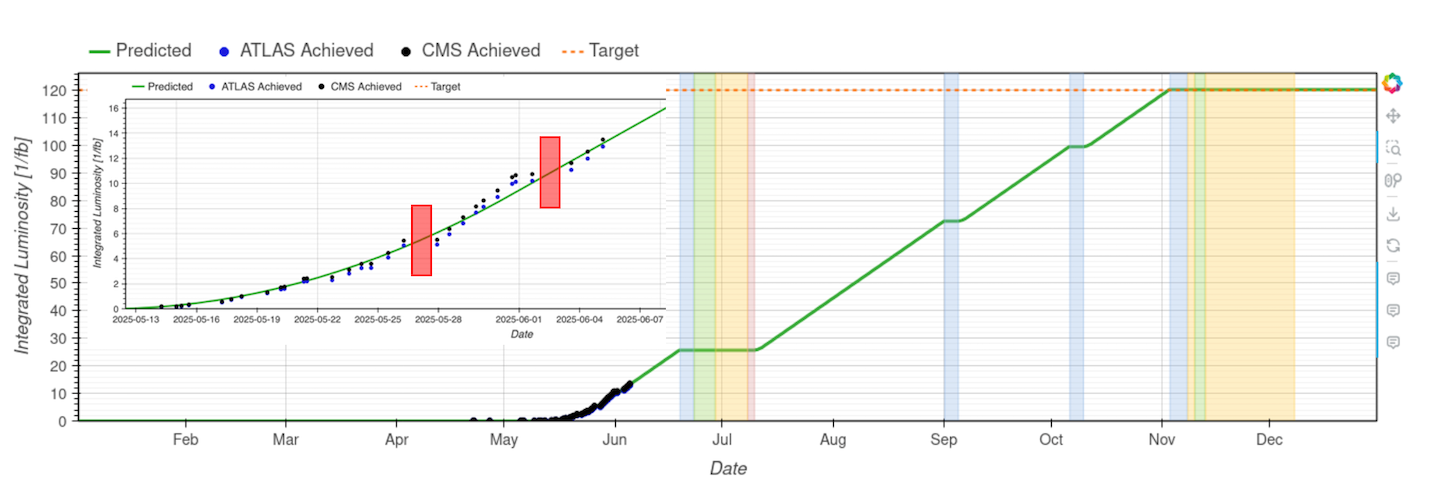The LHC reached its target of 2460 bunches per fill - the default filling scheme for 2025 - on 24 May. This milestone was achieved slightly later than anticipated in my previous Report but, impressively, still within a week of the first fill with 1200 bunches. The week that followed brought a mix of successes and challenges, but ultimately saw the LHC remaining on track to reach its luminosity production goals.
In the morning of 26 May, the SPS experienced a significant hardware fault when one of its magnets suffered an inter-turn short circuit. The first indication of the fault came from anomalous beam orbit behaviour. The SPS operations team initiated an orbit-based diagnostic, using the beam position monitor (BPM) data to localise the issue.
A dipole magnet suffering from an inter-turn short circuit was delivering a reduced integrated magnetic field, resulting in a measurable oscillation of the beam trajectory around the machine. An algorithm in the orbit measurement application, known as Kick-Buster, enabled the team to precisely identify the origin of the oscillation and therefore the affected magnet.
The technical teams rapidly swung into action to replace the magnet. By 9.15 p.m. the faulty magnet had been removed and a spare one had been installed. This was followed by alignment procedures, reconnection of the magnet vacuum system and pumping down of its vacuum chamber. This phase requires patience, as achieving the necessary vacuum level before being able to open the vacuum valves that isolate the sextant from the remainder of the machine and reestablish circulating beams takes time.

It was possible to restart the SPS on 27 May at 2.15 p.m., followed by beam orbit re-optimisation. By 3.45 p.m. the first bunches were transferred to the LHC, and following a sequence of LHC machine checks with beam, full luminosity production resumed on 28 May at 0.30 a.m. with stable beams composed of 2460 bunches each.
A series of highly productive LHC fills with more than 5 fb-1 of integrated luminosity in five days ensued, until beam operation was interrupted in the afternoon of 1 June due to an issue with the central timing systems, which orchestrate all the equipment in the accelerators. This system relies on the GPS signal, which was no longer being distributed within the central timing system. Experts solved the issue, and recovery of beam operation was under way when, in the early hours of 2 June, a major power cut affected the entire accelerator complex.
Large-scale power outages often cause collateral damage to individual systems that increases the recovery time across the chain of accelerators. Beam availability was gradually restored, beginning with Linac4, followed sequentially by the PS Booster, PS and SPS.
The LHC was back on track with stable 2460-bunch beams on 3 June at 1.45 a.m., pursuing its quest towards the integrated luminosity goal of 120 fb-1.






